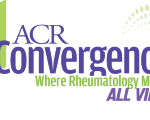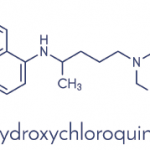Accumulation of HCQ/CQ in lysosomes of cardiac myocytes may lead to arrhythmias and infiltrative cardiomyopathy.
It should be recognized that RA and SLE are themselves established independent risk factors for atherosclerotic CVD, especially with high disease activity. RA patients are more likely to be hospitalized for acute myocardial infarction (MI) or to have an unrecognized MI, and disease duration of more than 10 years confers higher MI risk. Among patients with SLE, the relative risks of nonfatal MI and of death due to cardiovascular disease (CVD) have been estimated to be 10.1 (95% CI 5.8–15.6) and 17.0, respectively. Traditional risk factors further increase CVD risk in individuals with RA or SLE.
In observational studies, HCQ use has been associated with lower CVD risk in RA and SLE populations. In RA, a retrospective study showed a 72% lower CVD risk among HCQ-treated compared to non-HCQ-treated patients.
Key Points
HCQ and CQ are important medications used in SLE and RA with known clinical benefits, and patients should not stop taking them without talking to their prescriber. The risk of cardiac toxicity is considered to be low in comparison to the benefits of these medications. There is risk of torsade de pointes with the use of HCQ/CQ that is thought to be low. Current data do not support institution of specific recommendations regarding how to avoid these adverse effects; options include establishing a baseline EKG in patients with multiple risk factors and follow-up EKGs in patients with prolonged QTc or those receiving HCQ/CQ in combination with other QTc-prolonging therapies. Cardiomyopathy and conduction blocks are reported with long-term use of these agents, and providers should be vigilant to screen for cardiac symptoms in their patients.
Refer to the full article for all source material.
Excerpted and adapted from:
Desmarais J, Rosenbaum JT, Costenbader KH, et al. American College of Rheumatology white paper on antimalarial cardiac toxicity. Arthritis Rheumatol. 2021 Dec;73(12).

